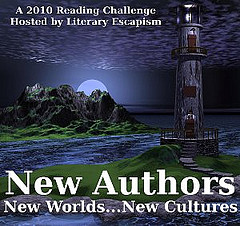
“After the first hour watching scratchy TV in the blood lab, I wished I had a book with me. Charlie and I weren’t big readers. Books were too expensive and library books were full of germs from all the people who had checked them out.” (page 123 of ARC)
Shoko is a Japanese woman who marries an American soldier, Charlie, shortly after the bombing of Nagasaki and Hiroshima. She tells her story of how she moved from a happy childhood to a tumultuous adolescence at a time when her nation was occupied by a foreign invader and her family had lost its position in the caste society. She’s an independent woman still beholden to Japanese traditions, though she takes time out to find true love.
“I understood then that my skills in school or in sports would not make my life come about in the way I wished. I took my bows at that recital, vowing I would learn what I needed and make the best marriage possible.” (page 6 of ARC)
Her trip down memory lane, unfortunately, is a bit stilted with little emotion, which could make it harder for readers to connect with Shoko. However, once readers are engaged with Shoko’s struggles as an American housewife as she adapts to different cultural norms and strives to raise her children properly. Mike and Suiko, her children, are as different as night and day, with Mike floating through life and Suiko taking her responsibilities to heart even to the detriment of her own dreams. Shoko’s relationship with her children is strained, but she must soon learn to rely on them when she tries to reunite with her estranged brother, Taro.
Dilloway’s novel is captivating as Shoko continues to tell her story and when her daughter, Sue takes over the narration when she heads to Japan to learn about her family’s past and reconcile her family after many decades of silence. As a debut, it is solid in drawing dynamic characters and creating fun dialogue between Shoko and Charlie and between Sue and Helena, Shoko’s granddaughter. Three generations populate these pages, but really How to Be an American Housewife is a story about the strong, independent women in this family.
Margaret Dilloway was inspired by her Japanese mother’s experiences when she wrote this novel, and especially by a book her father had given to her mother called The American Way of Housekeeping. She lives in Hawaii with her husband and three young children.
Please follow her on Twitter, check out her blog, and view the reading group guide for her debut novel.
Thanks to TLC Book Tours, Penguin, and Margaret Dilloway for sending me a copy of How to Be an American Housewife for review.
This is my 40th book for the 2010 New Authors Reading Challenge.



 Mailbox Mondays (click the icon at the right to check out the tour) has gone on tour since Marcia at The Printed Page passed the torch. This month our host is Shanyn at Chick Loves Lit. Kristi of The Story Siren continues to sponsor her In My Mailbox meme. Both of these memes allow bloggers to share what books they receive in the mail or through other means over the past week.
Mailbox Mondays (click the icon at the right to check out the tour) has gone on tour since Marcia at The Printed Page passed the torch. This month our host is Shanyn at Chick Loves Lit. Kristi of The Story Siren continues to sponsor her In My Mailbox meme. Both of these memes allow bloggers to share what books they receive in the mail or through other means over the past week. Apparently, I forgot to set up this week’s poetry circle ahead of time, but I didn’t forget.
Apparently, I forgot to set up this week’s poetry circle ahead of time, but I didn’t forget. The Hypnotist
The Hypnotist





 The second box came, and my husband was thrilled he could finally put this shelf together. The directions were very sparse with very little explanation of which pieces went where on the vertical pieces or which way it should be assembled. Unfortunately, while putting this shelving unit together following these directions, the vertical pieces couldn’t handle the pressure and cracked once again.
The second box came, and my husband was thrilled he could finally put this shelf together. The directions were very sparse with very little explanation of which pieces went where on the vertical pieces or which way it should be assembled. Unfortunately, while putting this shelving unit together following these directions, the vertical pieces couldn’t handle the pressure and cracked once again. It came later than the 2 days promised, but I took the afternoon to assemble it myself. I measured each shelf and measured each section bisected by the vertical pieces to make sure the horizontal shelves were in the correct locations after taking the time to deduce that the crazy scribbled numbers in the directions of the fully assembled piece were those measurements. I put the shelf together and waited for my husband to bring home his electric drill.
It came later than the 2 days promised, but I took the afternoon to assemble it myself. I measured each shelf and measured each section bisected by the vertical pieces to make sure the horizontal shelves were in the correct locations after taking the time to deduce that the crazy scribbled numbers in the directions of the fully assembled piece were those measurements. I put the shelf together and waited for my husband to bring home his electric drill. After much frustration and angst over this shelf, we finally got it together and struggled to put it up on the wall. We noticed that the placement for the wall anchors on the direction sheet were incorrect, and we had to shift around the anchors a few times to get the shelf to sit right on the wall. I got to put some great books on the shelves.
After much frustration and angst over this shelf, we finally got it together and struggled to put it up on the wall. We noticed that the placement for the wall anchors on the direction sheet were incorrect, and we had to shift around the anchors a few times to get the shelf to sit right on the wall. I got to put some great books on the shelves.




